Investing.com’s stocks of the week
If you’re trading on BMO InvestorLine, here are a few BMO ETFs worth considering for a globally diversified portfolio.
BMO S&P 500 Index ETF (ZSP)
60% of the portfolio goes to ZSP, giving you instant access to 500 large-cap U.S. stocks screened for earnings quality via the S&P 500.
You probably know this index is notoriously hard to beat—SPIVA data shows that 88% of active funds underperform it over a 10-year period.
Currently, the S&P 500 has a heavy overweight to technology, followed by financials, consumer discretionary, and healthcare. Since it’s market-cap weighted, all of the Magnificent Seven stocks sit comfortably in the top 10 holdings.
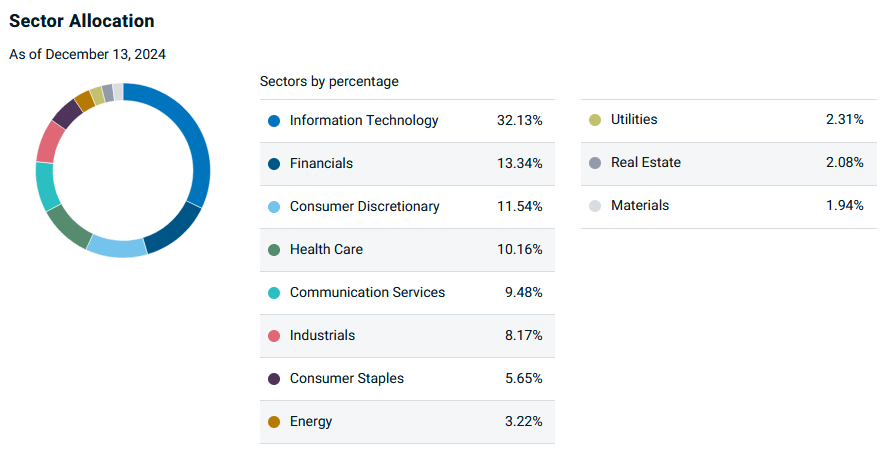
ZSP has delivered a 15.23% annualized total return over the last 10 years, boosted by a falling USD/CAD and rising US Dollar, as ZSP is unhedged. Keep in mind this performance already factors in the impact of the 15% foreign withholding tax on dividends.
BMO MSCI EAFE Index ETF (ZEA)
U.S. stocks have had a strong run, but they’re now quite expensive. If you want to diversify, it’s time to look internationally—which is why I’d allocate 30% to ZEA.
ZEA tracks the iShares MSCI EAFE ETF (NYSE:EFA), which stands for Europe, Australasia, and the Far East. It provides exposure to developed markets outside North America, including countries like Japan, the UK, France, Germany, and Australia.
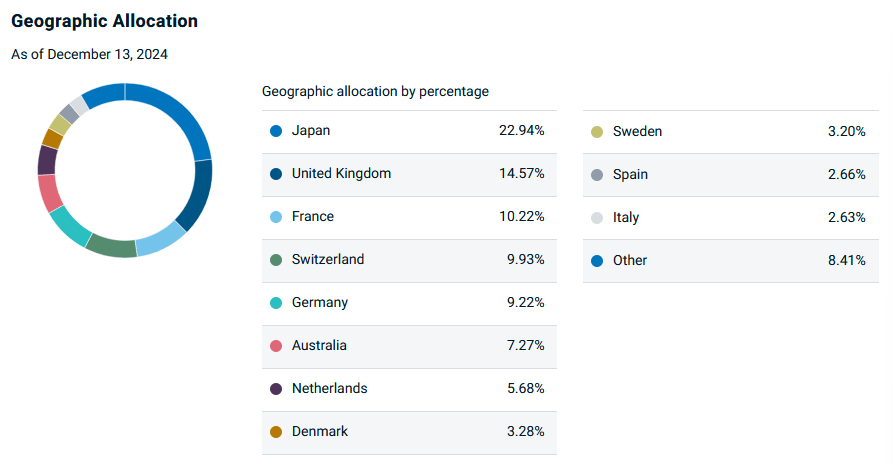
Why ZEA? It shores up your non-North American exposure, holding 727 stocks across many developed markets. You get broad exposure to blue-chip financials, industrials, and healthcare companies, which are well-represented in the index.
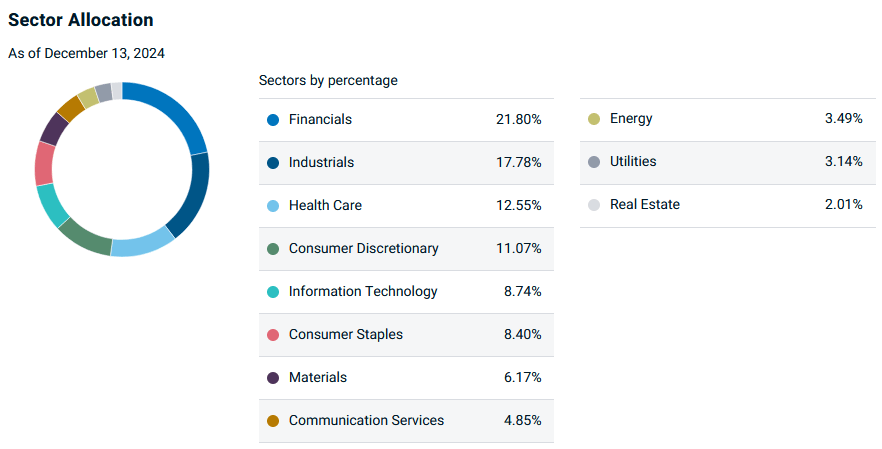
The expense ratio is slightly higher at 0.22%, but that’s the price you pay for international diversification. It also comes with a decent 2.7% distribution yield, making it a solid option for income-oriented investors.
BMO S&P/TSX Capped Composite Index ETF (ZCN)
Finally, we’ll round out our portfolio by incorporating a bit of home country bias, with ZCN making up 10% of the portfolio. This allocation is still three times Canada’s actual weight in the MSCI World Index.
ZCN tracks the S&P/TSX Capped Composite, a benchmark of 221 market-cap-weighted holdings. The “capped” part ensures no single stock exceeds 10% of the index at each rebalance.
The fund provides the typical Canadian sector exposure that complements U.S. and international holdings well—namely, overweights to financials and energy.
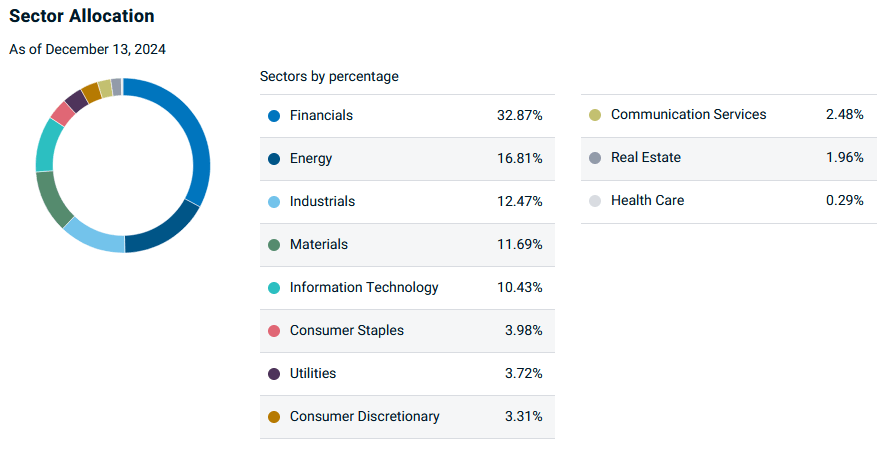
The best part about ZCN? It’s incredibly cheap, with a 0.06% MER, and offers a decent 2.71% distribution yield, most of which comes from tax-efficient eligible dividends.
Putting the portfolio together
With 60% in ZSP, 30% in ZEA, and 10% in ZCN, you’re diversified across over 1,000 stocks spanning the U.S., Canada, and EAFE markets, with a weighted average expense ratio of 0.13%.
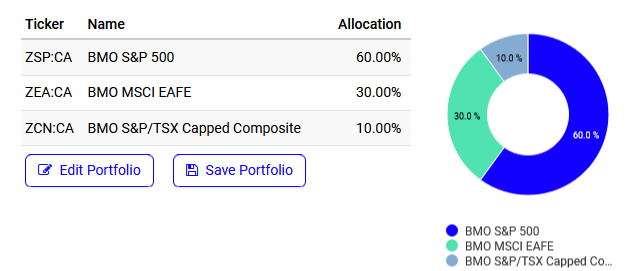
From January 2015 to November 2024, this simple, low-cost portfolio—rebalanced quarterly—would have earned you a 12.36% annualized total return, more than tripling an initial $10,000 investment. That’s a strong performance for doing nothing more than buying and holding three index ETFs.
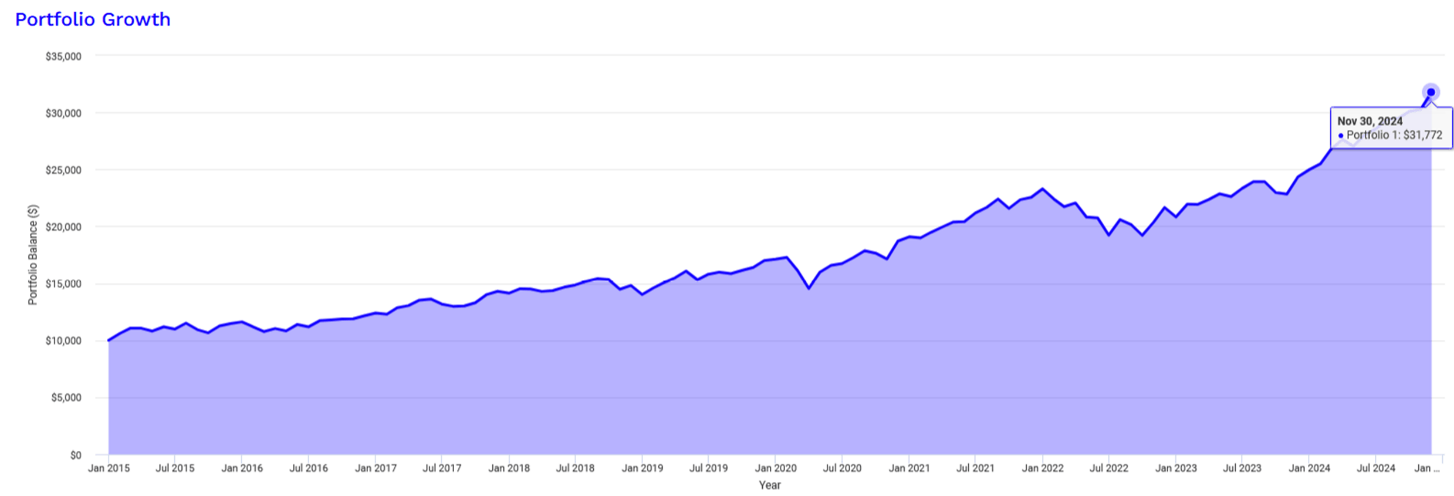
Disclaimer: The information provided by ETF Portfolio Blueprint is for general informational purposes only. All information on the site is provided in good faith, however, we make no representation or warranty of any kind, express or implied, regarding the accuracy, adequacy, validity, reliability, availability, or completeness of any information on the site. Past performance is not indicative of future results. ETF Portfolio Blueprint does not offer investment advice, and readers are encouraged to do their own research (DYOR) before making any investment decisions.
